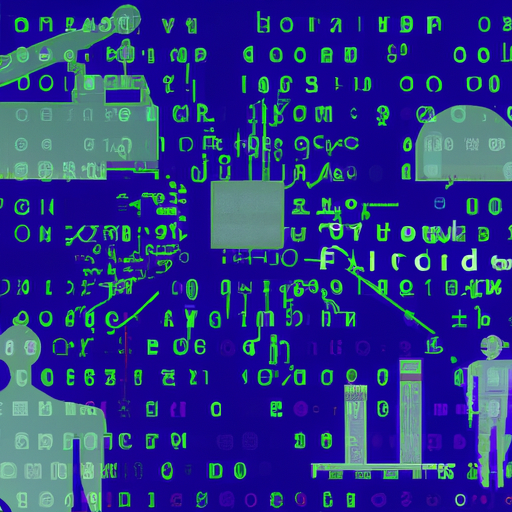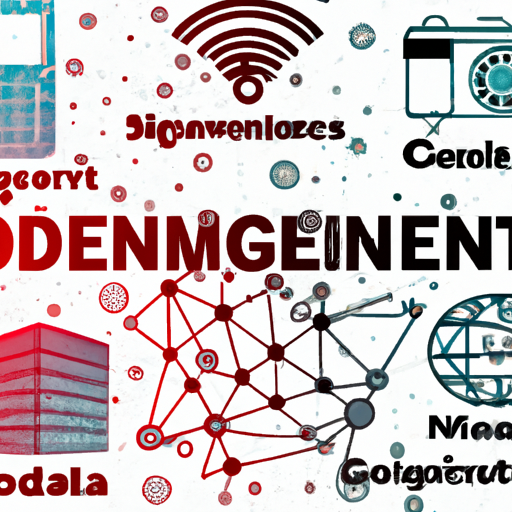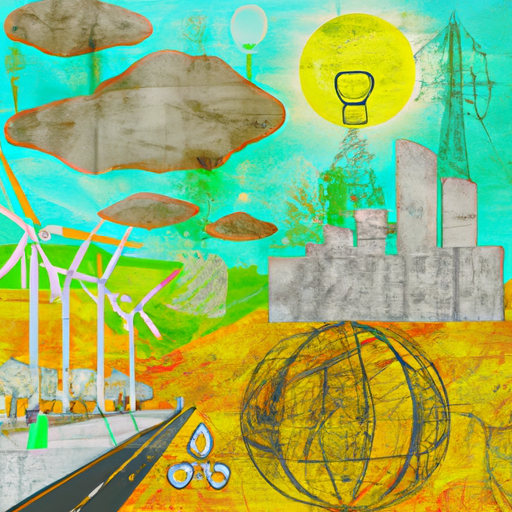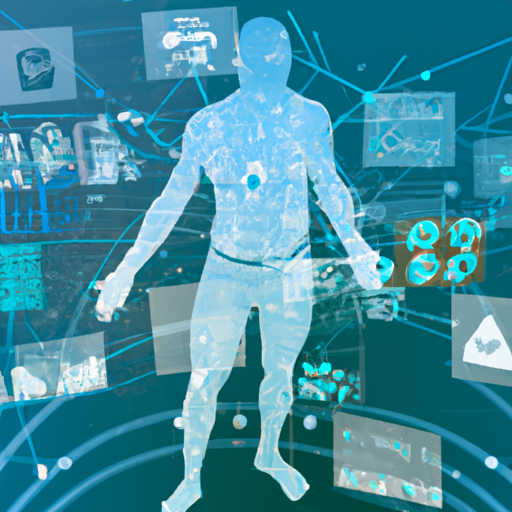-
Table of Contents
“Unlock the Future of Work: Harness the Power of Automation and AI to Transform the Labor Market”
Introduction
The future of work is a hot topic of discussion in the modern world. With the rapid advancement of automation and artificial intelligence (AI), the labor market is undergoing a major transformation. Automation and AI are changing the way we work, and the impact on jobs and the labor market is significant. Automation and AI are creating new jobs, while at the same time, eliminating some existing ones. This shift is creating both opportunities and challenges for workers and employers alike. In this article, we will explore the impact of automation and AI on jobs and the labor market, and discuss the potential implications for the future of work.
How Automation and AI are Changing the Nature of Work
The advent of automation and artificial intelligence (AI) is transforming the nature of work. Automation and AI are changing the way work is done, the skills required to do it, and the way people interact with their work.
Automation is the use of technology to automate tasks that would otherwise be done by humans. Automation can be used to reduce the amount of time and effort required to complete a task, as well as to increase accuracy and consistency. Automation can be used to automate mundane tasks such as data entry, or more complex tasks such as customer service. Automation can also be used to automate processes such as manufacturing, logistics, and supply chain management.
AI is the use of computer algorithms to simulate human intelligence. AI can be used to automate tasks that require complex decision-making, such as customer service, financial analysis, and medical diagnosis. AI can also be used to automate processes such as marketing, sales, and customer service.
The use of automation and AI is changing the nature of work in several ways. First, automation and AI are reducing the need for human labor in many industries. This is leading to job losses in some sectors, while creating new opportunities in others. Second, automation and AI are changing the skills required to do certain jobs. For example, AI-driven customer service requires different skills than traditional customer service. Third, automation and AI are changing the way people interact with their work. Automation and AI are making it easier for people to access information and complete tasks, while also making it easier for employers to monitor employee performance.
In conclusion, automation and AI are changing the nature of work in many ways. Automation and AI are reducing the need for human labor, changing the skills required to do certain jobs, and changing the way people interact with their work. As automation and AI continue to evolve, it is important to understand how these technologies are changing the nature of work and to prepare for the changes they will bring.
The Impact of Automation and AI on Job Security
The advent of automation and artificial intelligence (AI) has had a profound impact on job security. Automation and AI are increasingly being used to replace human labor in a variety of industries, from manufacturing to customer service. This has led to a decrease in the number of jobs available, as well as a decrease in wages for those who remain employed.
Automation and AI are able to perform many of the same tasks as humans, but with greater speed and accuracy. This has allowed companies to reduce their labor costs, as they no longer need to pay for human labor. Additionally, automation and AI can be programmed to work around the clock, meaning that companies no longer need to pay for overtime or shift work.
The impact of automation and AI on job security is not limited to the manufacturing and customer service industries. AI is being used in a variety of other industries, such as finance, healthcare, and education. AI is being used to automate processes, such as data analysis and customer service, which were previously done by humans. This has led to a decrease in the number of jobs available in these industries, as well as a decrease in wages for those who remain employed.
The impact of automation and AI on job security is not limited to the present. As technology continues to advance, it is likely that more jobs will be replaced by automation and AI in the future. This could lead to a decrease in wages for those who remain employed, as well as an increase in unemployment.
In order to mitigate the impact of automation and AI on job security, governments and businesses must work together to create policies that protect workers. This could include providing retraining and education opportunities for those who have lost their jobs due to automation and AI, as well as providing incentives for businesses to invest in human labor. Additionally, governments should ensure that labor laws are enforced, so that workers are not taken advantage of by employers.
Overall, automation and AI have had a significant impact on job security. While these technologies have allowed companies to reduce their labor costs, they have also led to a decrease in the number of jobs available and a decrease in wages for those who remain employed. In order to protect workers, governments and businesses must work together to create policies that protect workers and ensure that labor laws are enforced.
The Future of Work: What Automation and AI Mean for the Labor Market
The future of work is a topic of increasing importance as automation and artificial intelligence (AI) become more prevalent in the labor market. Automation and AI are transforming the way we work, and the implications for the labor market are far-reaching.
Automation is the use of technology to automate tasks that were previously done by humans. Automation can be used to increase efficiency, reduce costs, and improve accuracy. Automation is becoming increasingly common in the workplace, with robots and other automated systems taking over many of the tasks that were once done by humans. This has led to a decrease in the number of jobs available for humans, as well as a decrease in wages for those jobs that remain.
AI is the use of computer algorithms to simulate human intelligence. AI can be used to automate tasks that were previously done by humans, as well as to create new tasks that were not previously possible. AI is becoming increasingly prevalent in the workplace, with AI-powered systems taking over many of the tasks that were once done by humans. This has led to a decrease in the number of jobs available for humans, as well as a decrease in wages for those jobs that remain.
The implications of automation and AI for the labor market are far-reaching. Automation and AI are likely to lead to a decrease in the number of jobs available for humans, as well as a decrease in wages for those jobs that remain. This could lead to increased inequality in the labor market, as those with higher levels of education and skills are more likely to benefit from automation and AI than those with lower levels of education and skills. Additionally, automation and AI could lead to increased job insecurity, as jobs that were once secure may become obsolete due to automation and AI.
The future of work is uncertain, but it is clear that automation and AI will have a significant impact on the labor market. It is important for governments and businesses to be aware of the implications of automation and AI and to take steps to ensure that the labor market remains fair and equitable. This could include providing training and education opportunities for those who are at risk of being displaced by automation and AI, as well as providing incentives for businesses to invest in automation and AI in a way that benefits both businesses and workers.
Exploring the Benefits and Challenges of Automation and AI in the Workplace
The introduction of automation and artificial intelligence (AI) into the workplace has been a major development in recent years. Automation and AI have the potential to revolutionize the way businesses operate, allowing for increased efficiency, cost savings, and improved customer service. However, there are also potential challenges associated with the use of automation and AI in the workplace. This article will explore the benefits and challenges of automation and AI in the workplace.
The primary benefit of automation and AI in the workplace is increased efficiency. Automation and AI can automate mundane tasks, freeing up employees to focus on more complex tasks. This can lead to increased productivity and improved customer service. Automation and AI can also reduce costs by eliminating the need for manual labor and reducing the need for human resources.
Another benefit of automation and AI in the workplace is improved accuracy. Automation and AI can reduce errors and improve accuracy in tasks such as data entry and customer service. This can lead to improved customer satisfaction and increased profits.
However, there are also potential challenges associated with the use of automation and AI in the workplace. One of the primary challenges is the potential for job loss. Automation and AI can replace human labor, leading to job losses in certain industries. Additionally, automation and AI can lead to a lack of human interaction, which can lead to decreased morale and job satisfaction.
Finally, there is the potential for ethical issues to arise with the use of automation and AI in the workplace. Automation and AI can lead to decisions being made without human input, which can lead to ethical dilemmas. Additionally, automation and AI can lead to increased surveillance of employees, which can lead to privacy concerns.
In conclusion, automation and AI in the workplace can lead to increased efficiency, cost savings, and improved accuracy. However, there are also potential challenges associated with the use of automation and AI in the workplace, such as job loss, decreased morale, and ethical issues. It is important for businesses to consider the potential benefits and challenges of automation and AI in the workplace before implementing them.
Conclusion
The future of work is uncertain, but it is clear that automation and AI will have a significant impact on jobs and the labor market. Automation and AI will likely lead to job losses in some sectors, while creating new opportunities in others. It is important to recognize that automation and AI can be used to improve the quality of work and create new jobs, as well as to reduce labor costs. It is also important to ensure that workers are adequately prepared for the changes that automation and AI will bring. With the right policies and investments, automation and AI can be used to create a more equitable and prosperous future of work.




